
Resource Acknowledgement
The following resource was written for The Open Sanctuary Project by guest contributor Jill Tedeschi of Healthy Herd Consulting.
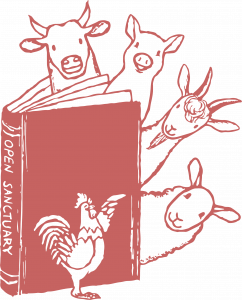
Be Sure To Check Out Part 1!
This resource references many concepts and steps in Keeping Track of Sanctuary Tasks: Part 1. Please be sure to familiarize yourself with Part 1 before reading this resource for complete comprehension.
Now that we’ve discussed keeping track of tasks at farmed animal sanctuariesAnimal sanctuaries that primarily care for rescued animals that were farmed by humans. that happen monthly or less frequently in Keeping Track of Sanctuary Tasks: Part 1, it’s time to tackle keeping track of the more frequent tasks. This includes daily, X times daily, every other day, every X days, weekly, every other week, X times per month, and all of the other seemingly endless possible frequencies in between.
For this resource, we’ll sort the tasks into four categories: healthcare tasks, feeding tasks, cleaning tasks, and miscellaneous tasks. Depending on your organization, you may also want to add additional sections for administrative, financial, and human resources tasks.
Much like Part 1, this resource will guide and empower you to create your own centralized record of these more-frequent tasks. We’ll discuss how to communicate the information, develop contingency plans if tasks do not happen, and troubleshoot pitfalls that may hinder success or follow-through.
Step 1: More Planning
Before we jump into creating the centralized record of tasks, we again need to think about who should create the centralized record, where the centralized record should live, and how to update future versions of the centralized record while still keeping older copies.
Keep Things Up-To-Date!
At a minimum, updating this centralized record of more-frequent tasks is necessary at least seasonally. For sanctuaries in places with extreme seasons, the tasks required during the warm months vary drastically from those needed during the cold months. Even if your sanctuary is in a location where the seasons don’t change much, sanctuary life is constantly in flux. Therefore, your centralized record should accurately reflect what’s currently happening onsite.
For the centralized record of these frequent tasks, one long bullet-list-style document may not make the most sense. Finding specific line items to update or delete may be challenging if every healthcare, feeding, and cleaning task is listed without organization, especially if your sanctuary has residents of diverse abilities, of multiple species, and who live in separate habitats.
Instead, you may find creating separate centralized records or separate workbook tabs on a single spreadsheet document for healthcare, feeding, cleaning, and miscellaneous tasks helpful. We’ve included a sample spreadsheet available for download at the bottom of this resource. You’ll see that the example spreadsheet has “YYYY.MM.DD” at the start of the file name to include the date of creation (or update). By starting the file name with the year followed by the month, you may find it easier to sort through multiple versions of the centralized record and easily find the one you’re looking for in the future.

In addition to discerning how to organize the tasks on the centralized record, think about how you will include how frequently the tasks need to be completed and any other pertinent details. The example spreadsheet provides space for you to include the following information:
- Task description
- Frequency task occurs
- Location the task happens
- Individual or group of residents the task pertains to
- Personnel/shift who complete the task
- Time(s) of the day the task needs to happen
- Additional details not otherwise specified
Step 2: Create
Each sanctuary’s list of tasks is unique, even if their resident populations and structures look similar. In this step, we’ll discuss how to brainstorm your centralized record of frequent tasks to help make sure you don’t miss anything.
We’ll start with the most zoomed-out lens, working our way toward hyper-specific tasks. We’ll think about healthcare, cleaning, feeding, and miscellaneous tasks for each category separately.
Category 1: Site-Wide Tasks
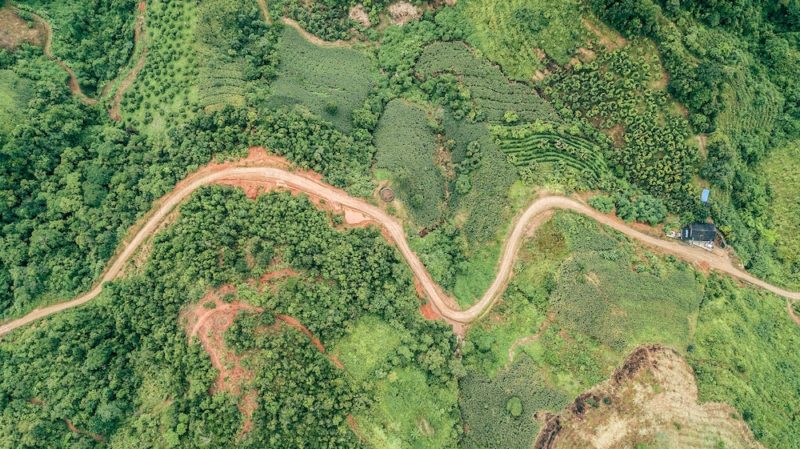
Imagine yourself zoomed out, hovering above your sanctuary, like a Google Maps satellite view. Looking at the sanctuary site as a whole, what tasks need to be completed on a more-frequently-than-monthly basis related to the following sub-categories?
Healthcare
Are there any frequent healthcare tasks that occur for the entire resident population? We’ll be brainstorming species-specific, location-specific, and individual-specific tasks next, so don’t include those items here. For sanctuaries with larger resident populations, this section might be blank. For smaller sanctuaries with only one or a few species, this might include line items such as weighing all residents every other week, etc.
What administrative healthcare tasks need to occur for the entire population? For example, how frequently do you update medical records or photos of residents that need to be logged into their permanent records? Do you have a resident database with information that needs frequent updating? How frequently are medications and healthcare supplies inventoried and reordered?
Cleaning
From the zoomed-out lens, what needs to happen to the entire sanctuary site from a cleaning perspective? For example, are there human restrooms that need to be cleaned and restocked? Are there hand-sanitizing stations scattered throughout the property that need to be cleaned and refilled? Is your sanctuary small enough that you can manage to sweep cobwebs away in all buildings in one day? Think of tasks that are big-picture and recurring throughout the property.
What administrative tasks related to cleaning need to occur sitewide? For example, does your sanctuary keep written standard operating procedures for cleaning habitats or buildings that need frequent updating? How frequently are cleaning supplies, including resident bedding, inventoried? How often are they ordered?
Feeding
What frequent feeding tasks does your sanctuary complete sitewide? Larger sanctuaries with various species and habitats might leave this section blank. Smaller sanctuaries with one or two species may have site-wide daily forage feeds, every-other-day deep cleanings of feed bowls, daily water bucket cleanings, twice-daily water top-offs, etc.
What administrative or preparatory feeding tasks does your sanctuary complete sitewide? For example, how frequently is pelleted food inventoried? What about dry forages? When do you order from your various food suppliers?
Miscellaneous
What else are we missing that happens sitewide or at the most zoomed-out lens at your sanctuary? For example, does your compost pile need to be watered or turned?
Category 2: Species-Specific Tasks
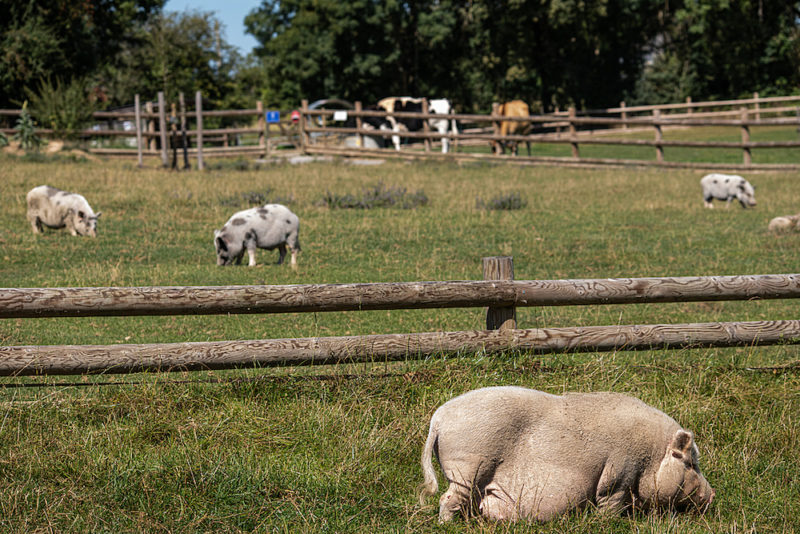
As we narrow our focus, let’s think about frequent tasks that happen to entire species at the sanctuary.
Healthcare
Are there specific healthcare treatments that apply to one particular species only? If so, list them here. Perhaps there are routine health checks conducted by species more frequently than monthly. Or, for example, if your rooster residents wear silicone-tipped spura stiff sharp spine (as on the wings or legs of a bird or insect) coverings, does someone frequently check that all individuals have their spur covers securely in place?
Just like with the site-wide healthcare tasks, consider any administrative healthcare tasks related to species. Perhaps all bird residents’ weights are recorded semimonthly, but large mammals are not. Take your time brainstorming for each species.
Cleaning
What species-specific cleaning tasks need to be completed? For example, are all pig beds fluffed and added to daily and totally replaced every X days? Are duckUnless explicitly mentioned, we are referring to domesticated duck breeds, not wild ducks, who may have unique needs not covered by this resource. and gooseUnless explicitly mentioned, we are referring to domesticated goose breeds, not wild geese, who may have unique needs not covered by this resource. enclosures spot-picked for wet areas every X days? Are in-use fans for chickens dusted daily? We’re still not thinking about specific habitats or living enclosures, just species as a whole.
Feeding
What feeding tasks occur on a species-specific basis? For example, are all goats given fresh hay daily and pigs given pelleted food twice a day? Are there large water troughs for cowsWhile "cows" can be defined to refer exclusively to female cattle, at The Open Sanctuary Project we refer to domesticated cattle of all ages and sexes as "cows." or horses that get dumped, scrubbed, and refilled routinely? If your sanctuary cares for small and large-breed chickens or turkeys, you may want to consider their tasks separately and include them in this brainstorm.
Miscellaneous
What other species-wide tasks occur that don’t quite fit into the three categories above? Include them here. For example, do you schedule resident enrichment by species?
Category 3: Location- And Habitat-Specific Tasks
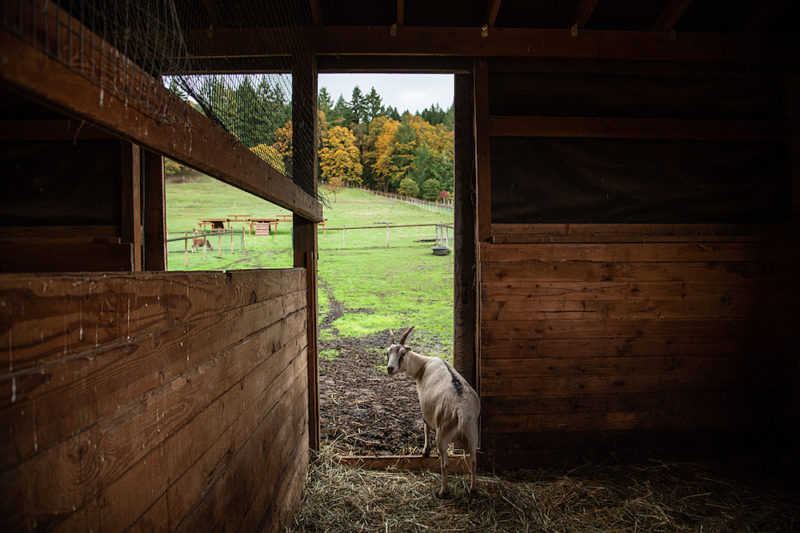
Next, we’ll think about each living spaceThe indoor or outdoor area where an animal resident lives, eats, and rests. and building individually. Let’s review each of the four categories again, including tasks specific to a location, building, or resident habitat. Be sure to include resident enclosures and all outbuildings, sheds, and human facilities.
Healthcare
Rather than thinking about entire species, are there specific healthcare tasks that happen in certain locations or habitats only? Go through each habitat individually. Larger sanctuaries may prefer to break up frequent healthcare tasks by building rather than by species if the resident population is large. For example, rather than checking that all goat residents who require a coat have one that fits well on a single day, your goat population may be so large that it makes sense to check goat coats in Habitat A on one day and Habitat B on another so as to not overwhelm the day’s tasks.
Cleaning
Cleaning by individual habitats or buildings is a common practice among both large and small sanctuaries. For each resident living space, record how frequently routine cleaning practices need to occur. Be granular within your list; rather than write “Clean cow barn every 3-4 days,” include what happens – are you completely removing all bedding and replacing it with a fresh supply, or is spot cleaning appropriate? Aside from changing bedding, what else gets done with that cleaning? Be sure to include details such as (but not limited to) dusting fans, raking up roadways, restocking supplies, cleaning out debris that’s stuck behind kickboards, scrubbing gates, and more. If additional cleaning tasks occur more frequently than during that example, “Clean cowWhile "cow" can be defined to refer exclusively to female cattle, at The Open Sanctuary Project we refer to domesticated cattle of all ages and sexes as "cows." barn every 3-4 days,” such as picking manure in the pasture, raking up rogue hay, etc., be sure to add those items to the centralized record as a separate line item.
Feeding
If your sanctuary has multiple resident living spaces and species, it might make sense to list feeding and watering tasks by location. As mentioned above in Cleaning, be granular when recording the tasks into the centralized record. Rather than writing “Feed and water Duck Barn 1,” record when the food goes down, who puts the food out, how much and what type of food is used, when the food is picked up, when the waters are changed and scrubbed, how many water sources are cleaned and refilled, and more. Not only is the information vital for record-keeping and reference at a later date, but it also helps to demonstrate how involved a task is and, therefore, how much time it may take.
Miscellaneous
What other frequent tasks occur by building or living space? Perhaps you offer resident enrichment by location rather than by species at larger sanctuaries. Or, maybe your sanctuary has a generator that needs its fuel levels checked biweekly. Each sanctuary is different; be sure to take your time thinking about each location.
Category 4: Individual-Specific Tasks
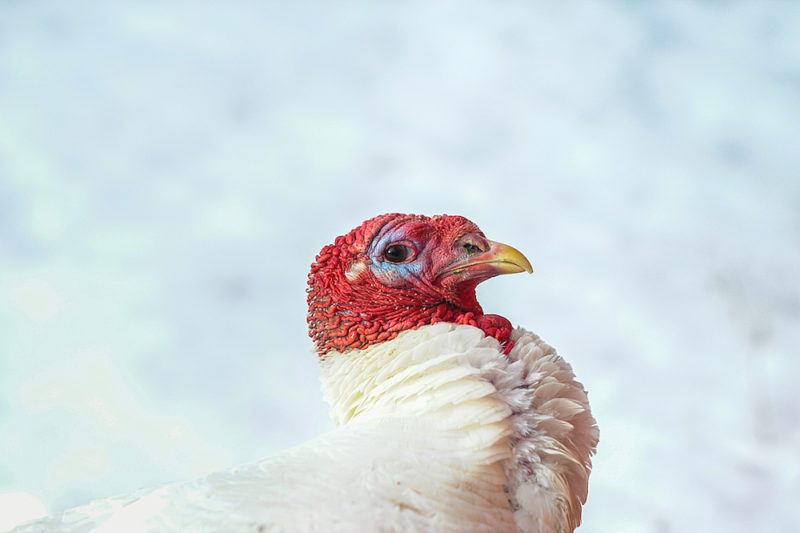
Finally, we’ll add frequent tasks specific to certain individuals at the sanctuary. Let’s run through the four categories one more time.
Healthcare
Healthcare tasks for individuals may change frequently based on their health status. Be sure to focus on adding chronic, frequent healthcare tasks as well as current short-term healthcare tasks. For example, you may add changing a foot wrap for a horse resident with chronic abscesses every 3 days, as well as performing physical therapy exercises with an individual who recently had surgery.
Cleaning
Individual residents who require baths or spot cleanings would fall more under the healthcare tasks. Think of this category as any accessories, structures, or enclosures that specific individuals use that need cleaning. This might include cleaning the fabric/degunking a cart or sling that a nonambulatory resident uses. It might consist of specialized cleaning of one section within a larger habitat that a certain individual uses. For example, if a bonded pair of arthritic sheep sleep in a separate pen within a larger habitat overnight, you might need to clean that pen more frequently and use cushier bedding than you do in the rest of the enclosure.
Feeding
Sanctuaries of all sizes likely care for individuals who require specialized feeding or water treatments. Be sure to list the individual or group of individuals who need the specialized food or water as well as all the pertinent details, such as what the specialized food is, what time(s) of the day it’s given, who’s responsible for preparing the food, who’s responsible for distributing the food, and who’s responsible for cleaning up after the feeding.
Miscellaneous
Add in any other frequent task that an individual resident requires that doesn’t fit into the previous three categories. For example, you might be conducting an introduction between two residents that requires specialized socialization exercises.
Step 3: Organize, Assign and Communicate
Now that we have a centralized record of tasks, it’s time for the jigsaw puzzle of organizing when each task should happen, assigning the task, and communicating this information. As you are compiling your schedule and checklists, be sure to have both centralized records (Part 1’s tasks that happen monthly or less frequently and Part 2’s tasks that occur more frequently than monthly). Make a cheat sheet of currently applicable tasks from Part 1’s centralized record. If you are using the provided spreadsheet, there is a tab for you to compile and list this information (“Rollover Tasks From Centralized Record Part 1”).
The number of personnel you have onsite and their varied abilities and experience will dictate who completes which task and when. For example, larger sanctuaries with employed caregivers as well as volunteers of varied abilities and experience may have shifts dedicated solely to healthcare, feeding, or cleaning. Other sanctuaries may have caregiving shifts that mix healthcare, feeding, cleaning, and miscellaneous tasks.
Sorting Out Shifts
If you are using the provided spreadsheet, mark what shift is responsible for each task under the column “Personnel.” You can then sort that column so that all the tasks being conducted by the same shift are grouped together by clicking the drop-down menu to the right of the Personnel cell and selecting Sort A→Z.
Once you have discerned which caregiving shift is responsible for each task, it’s time to communicate that information. Review Keeping Track of Sanctuary Tasks Part 1, Step 3: Communicate to see if paper calendars/checklists, whiteboards/laminated sheets, electronic calendars, or project management software might be the right fit for your communication needs. You may have a mix of communication methods too. For example, feeding tasks might be on paper checklists where you can specify what time each feeding must be done and have people initial when it’s completed; healthcare tasks might be on whiteboard calendars as well as individual residents’ paper treatment records. Smaller sanctuaries might reference a few whiteboards and transfer assigned tasks to their daily printed checklists. There is no wrong way to communicate the information as long as it’s working for humans and residents!
Step 4: Re-Evaluate and Edit
Once again, after implementing your new task communication system, check back with all users about how it’s going. Only through honest feedback can we create systems that work for everyone. Try your best not to be discouraged, and take what you’ve learned to try something else! Even the smoothest of systems has room for streamlining and improvement.
Contingency Planning
As most sanctuary operators know, even the best-laid plans are subject to the unexpected. Therefore, planning for what happens when tasks are not completed on time and need to be reassigned is imperative. For example, do they roll over to the following day? What happens if tomorrow’s task list is overloaded and also not completed? Who has the skill set to decide which tasks should be prioritized over other tasks? Who is responsible for adjusting follow-up tasks if the primary task is postponed? Be sure to discuss each of these scenarios with your team to come to a mutual understanding of what should happen and who is responsible for adjusting the scheduled tasks. Communication and clarification are paramount to success, and ambiguity and assumptions should be avoided.
Common Pitfalls
There are some common pitfalls that come up when tracking and communicating frequent sanctuary tasks. These include:
Lack Of Clarity
Although the system for tracking and completing frequent tasks may make sense to you or another individual, it may not be clear or cohesive for others. Be sure to take the time to communicate and train all team members with the system and encourage them to ask questions and give feedback. When inevitable mistakes or oversights happen, try to stay curious to figure out why they happened.
Also, be sure that tasks that cannot be postponed or completed at a different time are explicitly stated as such. These are primarily tasks that directly relate to the immediate health and safety of the individual residents and sanctuary property. For example, a large-breed chicken who receives rationed pelleted food shouldn’t be fed their first meal 3+ hours later than scheduled and their second meal on time (shortly after ingesting their postponed original meal). Another example might be that heat sources such as wall panels in bird barns during colder months must be inspected and dusted daily to ensure their safety before daily use, with no exceptions.
Losing Track Of Less-Defined Tasks
Not all tasks are set in stone to happen on certain days of the week or month. For example, you might schedule some tasks every 3-4 days or 10-14 days. Since the date the tasks are due next is dependent on when it was completed prior, you must have a clear system in place for who records when it was last completed and who assigns when it is due next.
Let’s imagine the following scenario: Tilly the turkey’s hock1: the tarsal joint or region in the hind limb of a digitigrade quadruped (such as the horse) corresponding to the human ankle but elevated and bending backward 2: a joint of a fowl's leg that corresponds to the hock of a quadruped wrap gets changed every 3-5 days. If you change Tilly’s wrap on Monday, you need to communicate via your sanctuary’s chosen method(s) that Tilly’s wrap needs to be changed again Thursday-Saturday. However, it rains on Tuesday, and CaregiverSomeone who provides daily care, specifically for animal residents at an animal sanctuary, shelter, or rescue. Carmen notices that Tilly’s wrap is soiled and wet and changes it Tuesday afternoon. It is now Carmen’s responsibility to communicate the change that Tilly no longer needs her wrap changed Thursday-Saturday and instead needs it replaced between Friday-Sunday. Suppose there is a record of when Tilly gets her wrap changed in multiple spots (for example, on a paper treatment record she has as well as a communal paper or whiteboard calendar). In that case, Carmen must know that it is their responsibility to update Tilly’s wrap change in both locations.
Overloading Team Members As They’re Learning
Even though seasoned sanctuary team members may easily complete the day’s assigned tasks, everything takes more time when you are training someone new or learning a new skill. You may wish to reassign tasks to a different person or reschedule nonessential tasks until the new caregiver is moving faster or is ready to take on more responsibility. It’s unrealistic to expect new personnel to have the same pace and work output as someone who’s been at the sanctuary for years.
Overloading The Schedule During Busier Days
As you assign tasks to the schedule, be mindful of which days are busier at your sanctuary than others. For example, do you have team meetings weekly and always run out of time to complete the task lists on meeting days? Are there more volunteers on-site during the weekend who could help catch up on cleaning tasks? Do you have a time-consuming veterinary or healthcare appointment scheduled that will take many hours and require the help of multiple team members? Is severe weather coming this month that may cause reduced staffing and increased physical work to keep the residents and property safe? These are just a few potential challenges that could cause avoidable task overload.
Losing Touch With Quality Control
Finally, pay attention to the quality of completed tasks. If you notice that tasks are not completed to your sanctuary’s standards, it’s back to exploration and discussion about why it’s happening. Perhaps too many tasks are assigned to a specific shift, causing individuals to rush through them. Maybe it’s been a while since staff or volunteers were trained to complete the task, and they need a reminder lesson. Be sure to stay clear of blame, shame, and assuming you know why someone’s work is not up to par. Again, stay curious and work with the other team members to figure out where and why the mistakes are happening and what can be done differently.
Keeping a centralized record and scheduling all the sanctuary tasks that happen more frequently than monthly is no small feat! Hopefully, this resource has provided you with a few strategies and tips to start what may seem like an overwhelming and daunting task. Although the amount of time and effort it takes to put these systems together may be significant, we believe the payoff of knowing that all necessary tasks are completed on time is well worth the effort!
Downloadable Spreadsheet
Ready to get started? We’ve got a free downloadable spreadsheet to help you keep sanctuary tasks organized! Enter either your organization’s name or your name and email below to download this free spreadsheet.
We promise not to use your email for any marketing purposes! Would you prefer to access this spreadsheet in a different way? Contact us and let us know!








